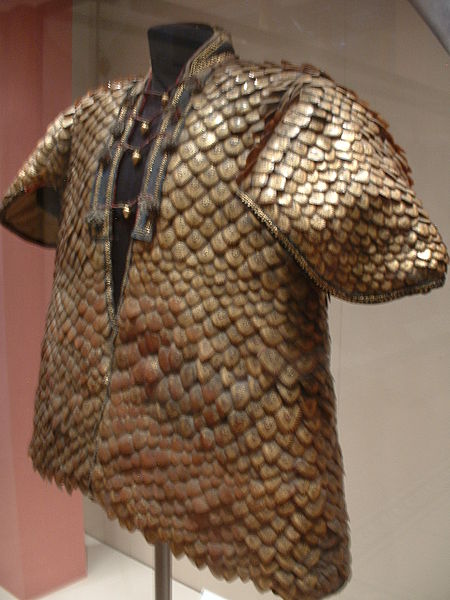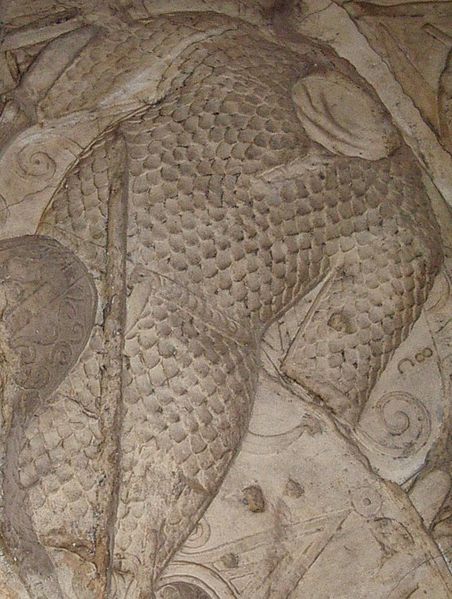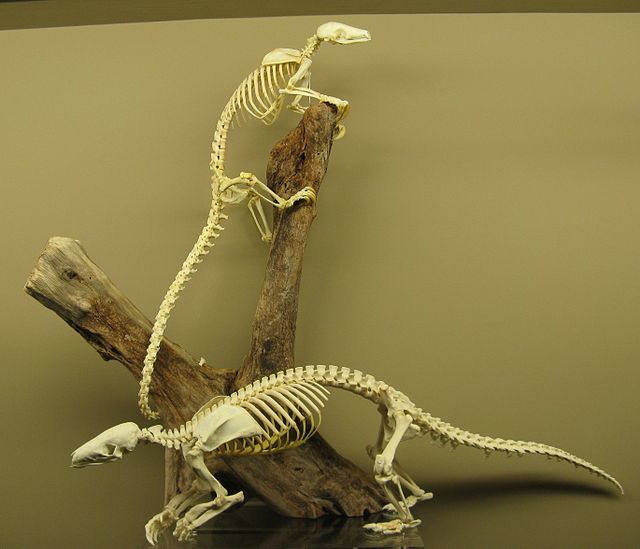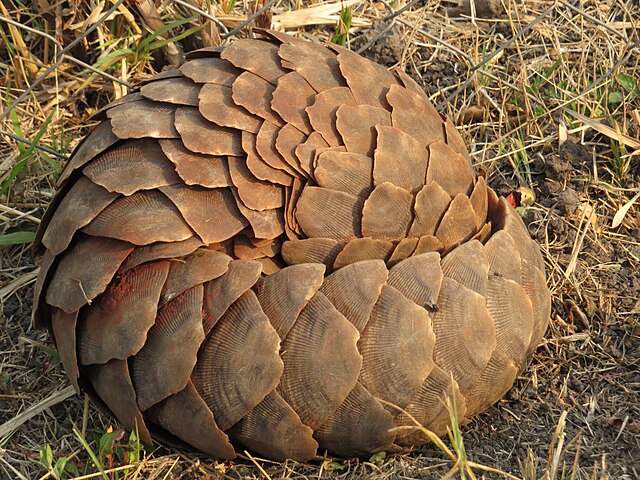Scale armour is an early form of armour consisting of many individual small armour scales (plates) of various shapes attached to each other and to a backing of cloth or leather in overlapping rows. Scale armour was worn by warriors of many different cultures as well as their horses. The material used to make the scales varied and included bronze, iron, steel, rawhide, leather, cuir bouilli, seeds, horn, or pangolin scales. The variations are primarily the result of material availability.
Coat covered with gold-decorated scales of the pangolin. India, Rajasthan, early 19th century.
Dacian scale armour on Trajan's column.
Fragment of lorica squamata. Each plate has six holes and the scales are linked in rows. Only the "lowermost" holes are visible on most scales, while a few show the pair above and the ring fastener passing through them.
Ming dynasty tomb guardian statue in mountain pattern armour, a possible variation of scale armour
Pangolins, sometimes known as scaly anteaters, are mammals of the order Pholidota. The one extant family, the Manidae, has three genera: Manis, Phataginus, and Smutsia. Manis comprises four species found in Asia, while Phataginus and Smutsia include two species each, all found in sub-Saharan Africa. These species range in size from 30 to 100 cm. A number of extinct pangolin species are also known. In September 2023, nine species were reported.
Pangolin
Pangolin skeletons at the Museum of Osteology (2009)
Schematic drawing of pangolin scale histology
Ground pangolin in defensive posture








